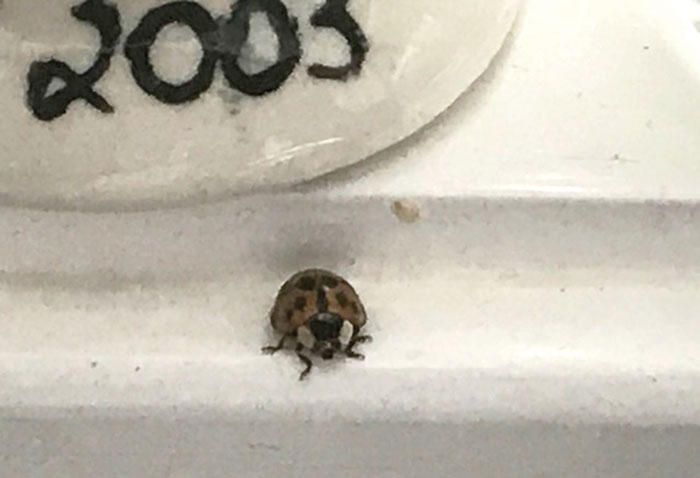Ladybugs are coming inside to get warm
Published 12:00 am Friday, January 19, 2018
Every winter, my house is plagued with tiny crawling beetles. I know I am not alone because I get phone calls from desperate homeowners asking me what to do about all these ladybugs in their houses. Yesterday one fell into my coffee!
Ladybugs are familiar insects in and around the home garden. Larva and adults consume hordes of aphids, scales and other soft-bodied insects, providing chemical-free control. As weather becomes cooler, ladybugs start looking for a warm place to spend the winter and sometimes become a nuisance indoors.
The ladybug that is infamous for invading homes is the multicolored Asian ladybug. This insect is not native to the United States (although we do have native ladybug species in the States). The USDA, as an attempt to naturally control soft-bodied insects, released the Asian ladybug.
The multicolored Asian ladybug is variable in appearance. Most beetles are about a quarter-inch long with yellowish, orange, beige or reddish orange forewings. There are usually ten black spots on each forewing; however, the number of spots is variable, too.
Now that winter has set in, these ladybugs start looking for a protected place to spend the winter. Suitable locations often include the sunnier or warmer sides of buildings and light-colored buildings, although many other buildings may pass as suitable. Research suggests that the beetles use chemical cues to find the crevice and may explain why the insects may return to the same site repeatedly.
Ladybugs can fit through tiny gaps or cracks in the siding or around door and window casings. Through these cracks, the beetles can get into your home. Many times, the adults will pass the winter in wall voids. Once inside a heated home, the ladybug will not live very long.
These beetles will not damage the structure of your home nor will they chew holes in walls or fabric. Primarily the Asian ladybug is a nuisance, but they may release a smelly, yellow liquid if agitated or smashed. This liquid can stain fabric and painted surfaces.
Pesticides are not very useful in fighting a ladybug invasion. Repeatedly spraying pesticides indoors is not safe for humans or pets and may not control the problem.
Exclusion is the best long-term approach to controlling ladybugs in the home. Make sure there are no gaps around the door. Install weather-stripping and seal utility openings. Caulk around windows and doors.
Inside the home, vacuuming can be an effective way to clean up the mess of insects. Insert a women’s knee-high stocking into the extension hose and secure with a rubber band. The stocking will collect the beetles and provide for easy disposal. If you do not use a stocking, you will need to empty the bag soon after vacuuming because the bag will begin to smell. Sometimes my vacuum takes up permanent residence in my kitchen to suck up the lady bugs.
Once you have vacuumed the beetles, you can choose to release the live beetles outside (they may find their way back in your house), freeze the beetles to kill them, or keep them in the refrigerator to release in the spring (many will die in the refrigerator).
For more information about ladybugs, multicolored Asian lady beetles or other horticultural topics, contact the Rowan County Extension Center at 704-216-8970 or on the web at rowan.ces.ncsu.edu.





